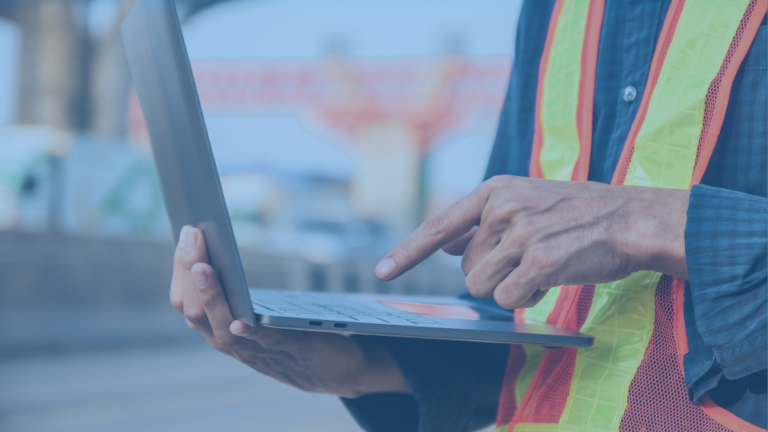First and foremost, let us acknowledge that risk is inherent in any construction project. Risk assessment protocols for construction firms can vary from company to company, and every project presents unique challenges; implementing comprehensive risk assessment protocols is crucial. From unforeseen weather conditions to uninsured vendors and safety hazards, construction projects are inherently risky.
The key lies not only in admitting these risks are real but also in systematically identifying, analyzing, and addressing them before they escalate into costly setbacks. With meticulous planning and a proactive approach, these risks can be mitigated much earlier and even transformed into opportunities for success.
Whether it’s a small-scale residential development or a large-scale infrastructure project, numerous variables can impact progress and success. In this blog, we will delve into the significance of several risk assessment protocols in construction and how they can materially enhance project outcomes.
A Multifaceted Approach to Risk Assessment
Implementing comprehensive risk assessment protocols involves a multifaceted approach that begins even before the first shovel hits the dirt. It starts with a thorough evaluation of the project scope, objectives, and stakeholders’ expectations. By clearly defining these parameters from the outset, project teams can gain a deeper understanding of the potential risks that may arise throughout the construction process.
Anticipating and Mitigating Disruptions
One of the primary benefits of implementing robust risk assessment protocols is the ability to anticipate and mitigate potential disruptions. By conducting a comprehensive risk analysis, project teams can identify both internal and external factors that may impact the project timeline, budget, and quality standards. This proactive approach enables stakeholders to develop contingency plans and allocate resources more effectively, thereby minimizing the likelihood of costly delays and disputes.
Ensuring Safety on Site
One of the most costly disruptions on a construction project is a stoppage or slowdown due to an unforeseen accident on site. A crucial aspect of comprehensive risk assessment is ensuring the safety and well-being of workers on construction sites. Construction projects inherently involve a variety of safety hazards, from working at heights to operating heavy machinery.
By proactively identifying and addressing potential safety risks, project teams can implement appropriate safety measures and protocols to protect workers from harm. This not only reduces the likelihood of accidents and injuries but also enhances morale and productivity among the workforce.
Fostering Accountability and Transparency
Furthermore, comprehensive risk assessment protocols foster a culture of accountability and transparency within construction projects. By involving all relevant stakeholders in the risk identification and mitigation process, project teams can ensure that everyone is aligned with the project’s objectives and the measures to address potential risks.
This not only enhances communication and collaboration but also fosters a sense of ownership among team members, leading to greater commitment and accountability towards project success.
Continuous Improvement Through Insights
In addition to mitigating risks, risk assessment protocols for construction also provide companies with valuable insights for continuous improvement. When organizations analyze past projects and identify recurring patterns or trends, they’re able to refine their risk management strategies and enhance their overall project delivery capabilities.
This iterative approach fosters a culture of learning and innovation, enabling construction firms to adapt to evolving market dynamics and emerging challenges effectively.
Gaining A Competitive Edge
When all of the above protocols are in place, construction companies can enhance their competitive edge in the marketplace. In an industry where margins are often razor-thin, and competition is fierce, the ability to deliver projects on time, within budget, and to the highest quality standards can be a significant differentiator.
By systematically addressing potential risks, construction firms can demonstrate their commitment to excellence and reliability, thereby building trust and credibility with clients and stakeholders.
6 Key Mitigation Strategies
Mitigation strategies in construction are crucial measures implemented to minimize or eliminate potential risks and hazards throughout the project lifecycle. These strategies encompass a range of proactive approaches, from on-site requirements to back-office workflows, with an aligned goal to enhance safety, reduce environmental impacts, and ensure the successful completion of construction projects without delays or disruptions.
1. Engineering Controls
Engineering controls are physical changes or adjustments made to equipment, machinery, or the work environment to reduce hazards. For example, installing guardrails around elevated work areas or implementing ventilation systems to reduce exposure to harmful fumes are engineering controls. These measures are designed to prevent accidents or injuries before they occur by addressing the root causes of hazards.
2. Personal Protective Equipment (PPE)
Personal protective equipment (PPE) includes items such as hard hats, safety goggles, gloves, and respiratory protection that workers wear to protect themselves from workplace hazards. PPE acts as a last line of defense against potential risks, providing a physical barrier between workers and hazards such as falling objects, chemical splashes, or airborne contaminants.
3. Emergency Preparedness
Emergency preparedness involves developing and implementing plans to respond effectively to unexpected events or emergencies on construction sites. This may include establishing evacuation procedures, providing first aid training, and ensuring that emergency contact information is readily available. By preparing for potential emergencies in advance, construction teams can minimize the impact of unforeseen events and ensure the safety of workers and bystanders.
4. Regular Inspections and Maintenance
Regular inspections and maintenance are essential for identifying and addressing potential hazards before they escalate into safety issues. This may involve conducting routine inspections of equipment, machinery, and work areas to identify any signs of wear, damage, or malfunction. By addressing maintenance needs promptly and proactively, construction teams can prevent accidents and maintain a safe working environment.
5. Administrative Controls
Administrative controls involve implementing policies, procedures, and training programs to reduce risks in the workplace. This may include creating clear safety protocols, scheduling regular safety meetings, and providing comprehensive training on safe work practices. By promoting awareness and understanding of potential hazards, administrative controls aim to minimize the likelihood of accidents and injuries.
6. Use of Technology
Technology can play a major role in increasing efficiency without cutting corners when it comes to risk mitigation. By leveraging technology to supplement existing manual workflows, construction teams can enhance their ability to identify and address potential risks in real-time, gaining the insight needed to make crucial financial and operational decisions just as fast.
Prioritizing Risk Management Is A Team Effort
While the benefits of implementing risk assessment protocols for construction are undeniable, it’s essential to recognize that this process requires a concerted effort and commitment from all stakeholders involved. From senior management to frontline workers, everyone must be actively engaged in the risk management process and committed to implementing the necessary measures to mitigate potential risks.
As the construction landscape continues to evolve, organizations that prioritize risk management will be best positioned to thrive amidst uncertainty and achieve sustainable growth.
Billy Can Help Your Team Succeed
Advanced software programs, such as Billy, allow teams to confidently know their business is covered. It also helps streamline risk management processes by quickly comparing project specific contractual requirements with individual vendor compliance statuses. When time is money, every hour counts!
Want to see how Billy would work for your business? Request a demo here!
Frequently Asked Questions
What are the steps to do a comprehensive risk assessment?
Conducting a comprehensive risk assessment in construction projects begins with evaluating the project scope, objectives, and stakeholder expectations. Then, potential risks are systematically identified, analyzed for likelihood and impact, and mitigated with proactive strategies. Throughout the project lifecycle, continuous monitoring and review ensure the effectiveness of risk management measures, allowing for adjustments as needed to maintain project success.
What are the best tech tools for construction projects?
The best tech tools for construction projects encompass a range of software and hardware solutions that enhance efficiency, safety, and project management. These include Building Information Modeling (BIM) software for visualization and coordination, and construction management platforms like Procore for scheduling and communication. Additionally, compliance tracking software such as Billy, which integrates seamlessly with Procore, streamlines compliance management, ensuring projects adhere to regulatory standards and contractual requirements.
What is a comprehensive risk assessment approach?
A comprehensive risk assessment approach in construction encompasses evaluating project scope, identifying potential risks, analyzing their likelihood and impact, and implementing proactive mitigation strategies. It involves continuous monitoring and review to ensure the effectiveness of risk management measures, fostering a culture of learning and improvement. By addressing various aspects of project risk systematically, construction teams can enhance project outcomes and ensure success amidst uncertainty.






